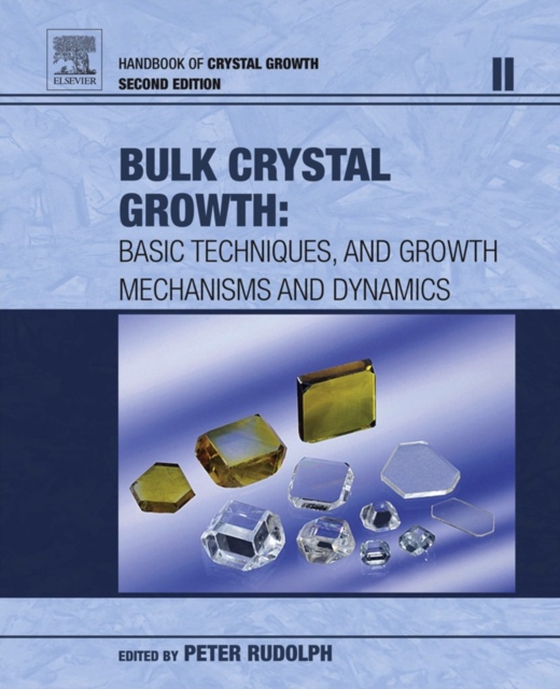
Handbook of Crystal Growth e-bog
2921,57 DKK
(inkl. moms 3651,96 DKK)
Vol 2A: Basic TechnologiesHandbook of Crystal Growth, Second Edition Volume IIA (Basic Technologies) presents basic growth technologies and modern crystal cutting methods. Particularly, the methodical fundamentals and development of technology in the field of bulk crystallization on both industrial and research scales are explored. After an introductory chapter on the formation of minerals, rul...
E-bog
2921,57 DKK
Forlag
Elsevier
Udgivet
4 november 2014
Længde
1418 sider
Genrer
PNT
Sprog
English
Format
pdf
Beskyttelse
LCP
ISBN
9780444633064
Vol 2A: Basic TechnologiesHandbook of Crystal Growth, Second Edition Volume IIA (Basic Technologies) presents basic growth technologies and modern crystal cutting methods. Particularly, the methodical fundamentals and development of technology in the field of bulk crystallization on both industrial and research scales are explored. After an introductory chapter on the formation of minerals, ruling historically the basic crystal formation parameters, advanced basic technologies from melt, solution, and vapour being applied for research and production of the today most important materials, like silicon, semiconductor compounds and oxides are presented in detail. The interdisciplinary and general importance of crystal growth for human live are illustrated.Vol 2B: Growth Mechanisms and DynamicsHandbook of Crystal Growth, Second Edition Volume IIB (Growth Mechanisms and Dynamics) deals with characteristic mechanisms and dynamics accompanying each bulk crystal growth method discussed in Volume IIA. Before the atoms or molecules pass over from a position in the fluid medium (gas, melt or solution) to their place in the crystalline face they must be transported in the fluid over macroscopic distances by diffusion, buoyancy-driven convection, surface-tension-driven convection, and forced convection (rotation, acceleration, vibration, magnetic mixing). Further, the heat of fusion and the part carried by the species on their way to the crystal by conductive and convective transport must be dissipated in the solid phase by well-organized thermal conduction and radiation to maintain a stable propagating interface. Additionally, segregation and capillary phenomena play a decisional role for chemical composition and crystal shaping, respectively. Today, the increase of high-quality crystal yield, its size enlargement and reproducibility are imperative conditions to match the strong economy.Volume 2A Presents the status and future of Czochralski and float zone growth of dislocation-free silicon Examines directional solidification of silicon ingots for photovoltaics, vertical gradient freeze of GaAs, CdTe for HF electronics and IR imaging as well as antiferromagnetic compounds and super alloys for turbine blades Focuses on growth of dielectric and conducting oxide crystals for lasers and non-linear optics Topics on hydrothermal, flux and vapour phase growth of III-nitrides, silicon carbide and diamond are explored Volume 2B Explores capillarity control of the crystal shape at the growth from the melt Highlights modeling of heat and mass transport dynamics Discusses control of convective melt processes by magnetic fields and vibration measures Includes imperative information on the segregation phenomenon and validation of compositional homogeneity Examines crystal defect generation mechanisms and their controllability Illustrates proper automation modes for ensuring constant crystal growth process Exhibits fundamentals of solution growth, gel growth of protein crystals, growth of superconductor materials and mass crystallization for food and pharmaceutical industries
 Dansk
Dansk

